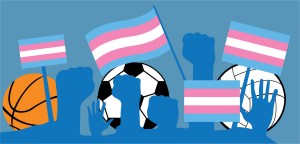Do gender languages influence gender roles and norms?
Linguistic distinctions between genders should be reexamined
January 15, 2020

In reference to the restrictions language can create, Whoopi Goldberg said in a 1986 interview: “An actress can only play a woman. I’m an actor, I can play anything.”
Today, most female actors refer to themselves as actors, not actresses, and gender-neutral terms — like “first-year” rather than “freshman,” “humanity” instead of “mankind,” “legislator,” compared to “congressman” — have been picked up in popular discourse.
These conversations are occurring in regard to English, but non-conforming Spanish speakers are creating space for dialogue within their language, like coining the term “Latinx,” instead of utilizing the binary Latina or Latino. However, because Spanish is a “gender language,” it is less accommodating than English.
“Gender languages,” as defined by behavioral economists Pamela Jakiela and Owen Ozier in their 2018 research piece “Gender Language,” are languages that divide nouns into either a masculine or feminine category. Spanish, Arabic, Hebrew, Portuguese, Amharic, French and about a dozen others are considered gender languages.
According to their research, Jakiela and Ozier estimate that 38.6% of the world’s population natively speaks a gender language.
A plethora of academic literature confirms that women who speak a gender language are more societally restricted than women who do not. Jakiela and Ozier analyzed 4,336 living languages (99% of the world’s languages) and explored the relationship between grammatical gender, women’s labor force participation, women’s educational attainment and cultural attitudes towards gender.
Their research found that women whose native tongue is a gender language are 18% less likely to be in the labor force than women whose native language is not a gender language. It was concluded that the use of gender languages has a hand in keeping at least 125 million women out of the workforce globally.
Economist Victor Gay found that men who spoke a gender language were 6% more likely to be involved in the labor market, compared to gender-language-speaking women, who were 6.3% less likely to be in the labor force. Additionally, it was found that women who speak gender languages are more likely to work fewer weeks and work shorter hours, while men who speak gender languages are more likely to work more often and more intensively.
In 1875, John Beames, scholar of linguistics and Indian history, noted that “the masculine is used to denote large, strong, heavy and coarse objects; the feminine weak, small and fine ones” within the Indo-Aryan gender languages he studied.
Beames’ work leads to this question to be posed: Is it detrimental when languages gender nouns in a manner that mirrors historical views on how that gender performs?
As the included literature and data reinforces, it is.
The Economic Commission for Latin America and the Caribbean reported that in 2018, at least 3,529 women (9.6 per day) were victims of femicide: the killing of women on the basis of gender. Latin America and the Caribbean continue to have the highest rates of femicide in the world, and the most spoken languages in both regions; Spanish, Portuguese and French, are all gender languages.
It is extremely detrimental to a woman’s quality of life when she is not in school or a workforce participant due to gender marginalization. UNICEF’s website notes that “an extra year of schooling for girls reduces fertility rates by 5 to 10 percent,” and that in India, “the infant mortality rate of babies whose mothers have received primary education is half that of children whose mothers are illiterate.” Additionally, girls with access to education are less likely to experience teen pregnancy, sexual abuse and violence, incest, domestic violence, exploitation and poverty.
In the fight for true gender equality, it is much easier to begin diagnosing and mitigating these social issues by acknowledging language as a contributor to the restraining of women’s upward mobility. The uncovering of the restrictions gender languages create are only the surface of the deeply-rooted inequality present in so many cultures across the globe.


























































































Holly Hartley • Jan 18, 2020 at 5:32 am
A fascinating and thought provoking article.